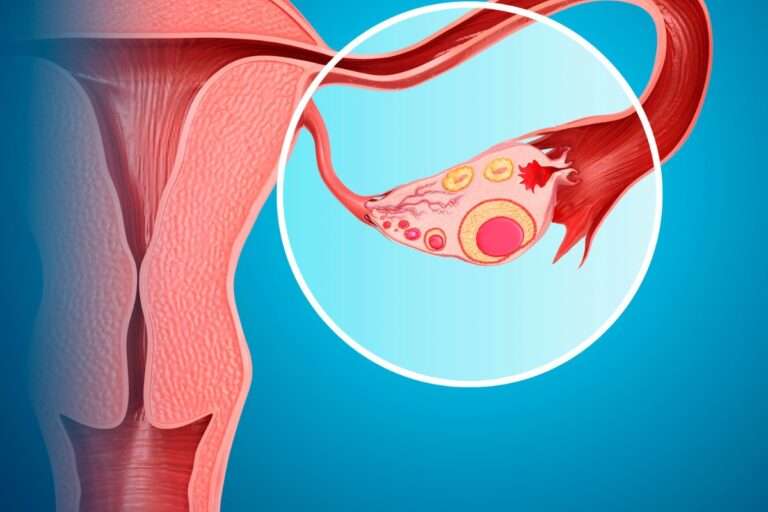
A pregnancy ovarian cyst is usually not a reason to be worried. Most ovarian cysts are painless and disappear on their own. Ovarian cysts do not usually cause symptoms, though they can be painful if they rupture. If a cyst twists or causes the ovary to twist (a condition known as ovarian torsion), you will require immediate surgery. While it is rarely necessary, an ovarian cyst can be safely removed during pregnancy.
A fluid- or tissue-filled sac or pouch in or on the ovary is known as an ovarian cyst.
Ovarian cysts are typically painless and disappear on their own. They can range in size from half an inch to four inches, and they usually appear during or after menopause.
Approximately 7% of women worldwide have an ovarian cyst at some point in their lives.
Ovarian cysts are classified into several types:
1) Functional cyst:- It is the most common type of cyst, which is related to ovulation. They don’t cause cancer. Follicular cysts and corpus luteum cysts are examples of functional cysts.
2) Endometrioma cyst:- It can develop in women who have endometriosis (a condition where the tissue that normally lines the uterus grows outside the uterus, often on the ovaries).
3) Teratoma cysts:- (also known as dermoid cysts) contain a variety of bodily tissues, including skin and hair tissue. Teratoma cysts can exist in the body from birth and grow during a woman’s reproductive years.
It’s uncommon, but these can develop into cancer.
4) Cystadenoma cysts are benign growths on the ovary’s outer surface (non-cancerous). They can grow to be quite large and sturdy.
Polycystic ovary syndrome occurs when the ovaries produce a large number of small cysts (PCOS). PCOS can impair fertility and lead to diabetes later in life.
A corpus luteum cyst is the most common type of ovarian cyst during pregnancy. The follicle that released the egg fills with fluid and remains on the ovary rather than shrinking.
These cysts usually disappear on their own by the middle of the second trimester, but they can remain on the ovary and, if large or causing symptoms, may need to be removed.
Symptoms of ovarian cysts:
Ovarian cysts rarely cause any symptoms. Your doctor or nurse may discover one during a routine pelvic exam or ultrasound.
It can be painful if an ovarian cyst grows large, bleeds, ruptures, twists, or causes the ovary to twist.
Other symptoms of an ovarian cyst include:
1) Bloating
2) Pressure in the abdomen
3) Pain associated with bowel movements
Ovarian torsion is typically characterized by intermittent lower abdominal pain on one side. It may also result in:
-Nausea
-Vomiting
-Fever of low severity
Torsion of the ovaries is a medical emergency. If you suspect you have ovarian torsion, go to the emergency room right away.
Treatments for ovarian cysts
Ovarian cysts are usually not treated. They leave on their own. Unless:
You have a ruptured ovarian cyst. In this case, you will almost certainly require pain medication. Your body will usually absorb the ruptured cyst, but your healthcare provider will advise you to rest and watch for signs of infection.
You suffer from ovarian torsion (the cyst causes the ovary to twist). This is a medical emergency that will necessitate surgery.
If the cyst is large or causing symptoms, it should be removed. Rest and possibly surgery may be recommended by your caregiver.
Ovarian cysts rarely cause problems during pregnancy, but if they continue to grow, they may rupture,
twist, or cause the ovary to twist (this twisting is called ovarian torsion). A growing cyst may cause complications during childbirth,
especially if it is a large mass obstructing the abdomen or pelvis.
Is it safe to have an ovarian cyst removed while pregnant?
An ovarian cyst can be safely removed during pregnancy if necessary, though your caregiver will most likely avoid removal unless you are in pain or the cyst is bleeding.
If surgery is required, you may be able to have minimally invasive laparoscopic surgery through small incisions. However, in some cases, routine abdominal surgery is required.